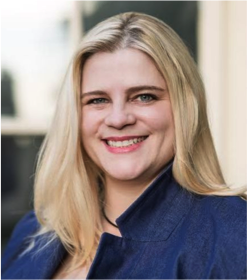Crystal King shares how she structured Keurig Green Mountain’s social media program

When Crystal King joined the Keurig Green Mountain team in late 2011, the company didn’t have a significant social presence and certainly didn’t have an entire program dedicated to it. So she built one from the ground up.
“I came on board at Keurig at the very beginning of their social media practice,” says Crystal. “They had just a couple channels, really starting slow.”
But she had experienced this before, coming from another large company with a nearly nonexistent social presence. “Previously I was at Sia Technologies where I helped give them the foundation for their social media program—a large, multi-national program, servicing multiple divisions in multiple countries.”
With her previous experience, Crystal knew that building a social media program for this rapidly growing coffee company would be difficult, but not impossible. So she got to work.
First, Crystal pinpointed Keurig’s specific business goals, two of which were to drive innovation and provide outstanding customer service.
“In my world, we care deeply about stellar customer service. It’s at the very heart of Keurig Green Mountain—making sure that our customers have the best experience they possibly can,” Crystal explains.
She knew that each business goal had to be actionable and, of course, should tie into what the company intended to do on social media. For example, Crystal mentioned that in order to provide Keurig’s signature customer service, her team set a goal to respond to customers within a two-hour period.
Then she evaluated who her program’s stakeholders were.
She explains that the stakeholders’ priorities should be the basis for a social media program’s goals. For some, those stakeholders could be in public relations, corporate communications, sales, or human resources.
According to Crystal, her program’s stakeholders were in marketing. “People are realizing that you can’t really do a lot of marketing unless you have social media at the core of it,” she says.
Next, Crystal looked at where Keurig Green Mountain was headed.
She says she asked herself, “Is this a program that can be replicated in other places? Or do I need to start thinking about how I’m going to purchase software that will scale if I’m international?” Once she knew that Keurig intended to be an international brand, she could structure the social media program accordingly.
“We recently looked into using a moderation agency because our volume, happily, was so big that we couldn’t manage it internally,” Crystal says. “A big factor for us, because we are planning on becoming an international company, is that moderation agency had to be working in multiple languages.”
Lastly, before building her team, Crystal had to determine if she had consensus at Keurig.
She quotes a Ragan survey, “Only 38% of social media practitioners felt that they had the buy-in and the backing of the higher ups in their organization.”
She goes on to say how important it is to “find those people who really believe in what you’re doing and can help champion what you’re looking to achieve.”
Once Crystal knew she had a solid foundation for her program, she was able to start structuring her team.
She considered Keurig’s social media goals, which seamlessly tied into the brand’s business goals. Then she was able to define the roles, both internal and external, required to accomplish each one of those goals.
As Crystal mentioned earlier, Keurig chose to outsource their community management to a moderation agency. But that was no easy decision. “When we were looking at those moderation agencies and the different models, I put together a series of possibilities for our executive team. I looked at things like if we staffed in-house, what are the pros and cons?” She says, “If we took it externally, this is what it would look like. If we need to scale it, this is what it would look like. And being able to have multiple scenarios will help you gain that consensus.” That decision ultimately helped make their internal social media team much more efficient.
The content manager was one of the many roles that had stay in-house.
“Content management is a really big deal,” Crystal says. “We have 16 social media channels across Keurig and Green Mountain. We require a great deal of content because we have really crazy, happy, passionate fans and we want to give them the tools to talk more excitedly about the coffee they already love.”
Crystal and her team were able to find an incredibly talented content manager who is currently responsible for creating the beautiful things coming from Keurig.
Once the team was structured, Crystal started planning for the future.
She notes how important it is to determine business and social goals a year or so in advance. She develops a timeline for reaching them and then structures her team accordingly.
Crystal was able to catapult Keurig Green Mountain’s social media program through careful planning, determination, and meticulous execution, but it all would have been for nothing without the support of her team, and Keurig as a whole. “Talk to the people that understand the importance of what you’re doing,” Crystal explains. “Find ways to get people just as excited about your social media program as you are.”
You can follow Crystal on Twitter and connect with her on LinkedIn
